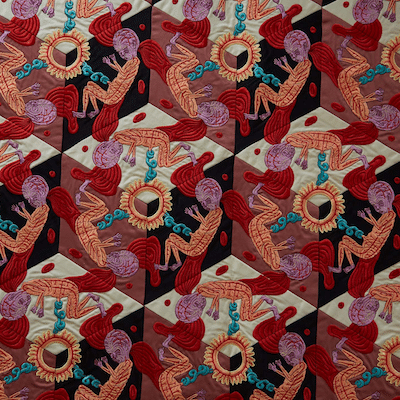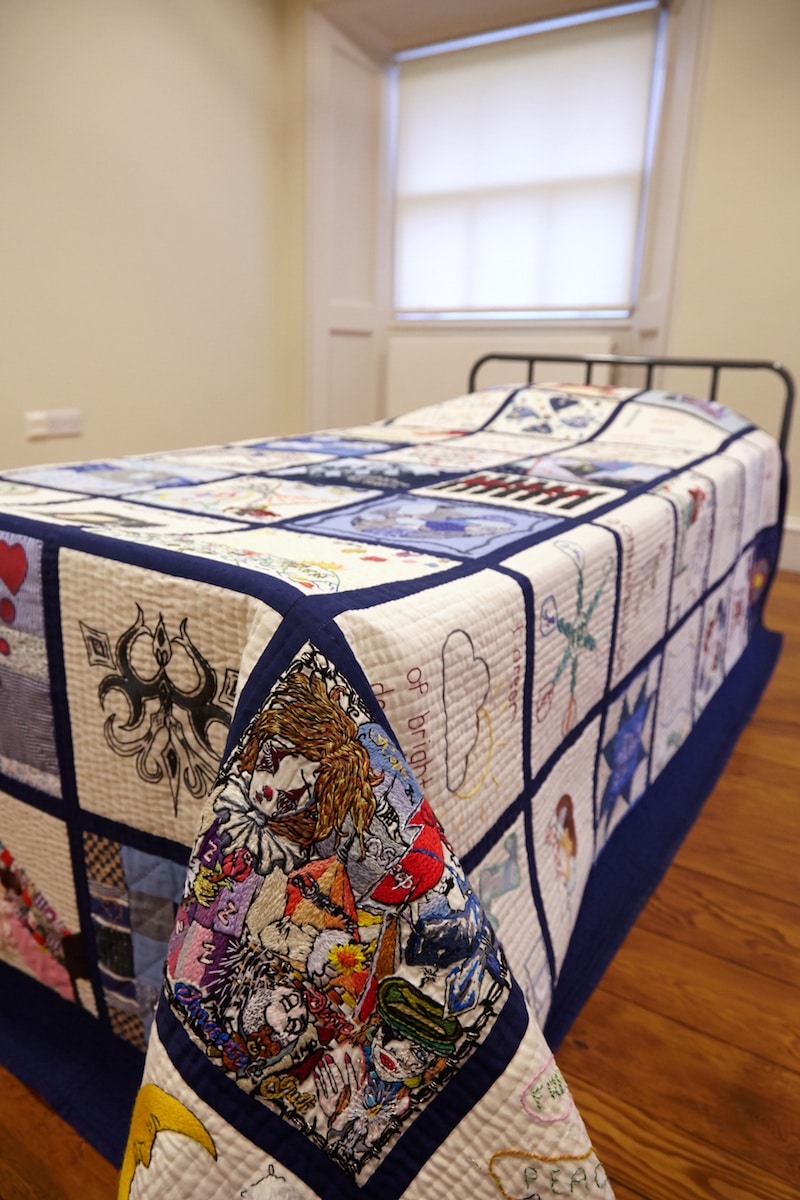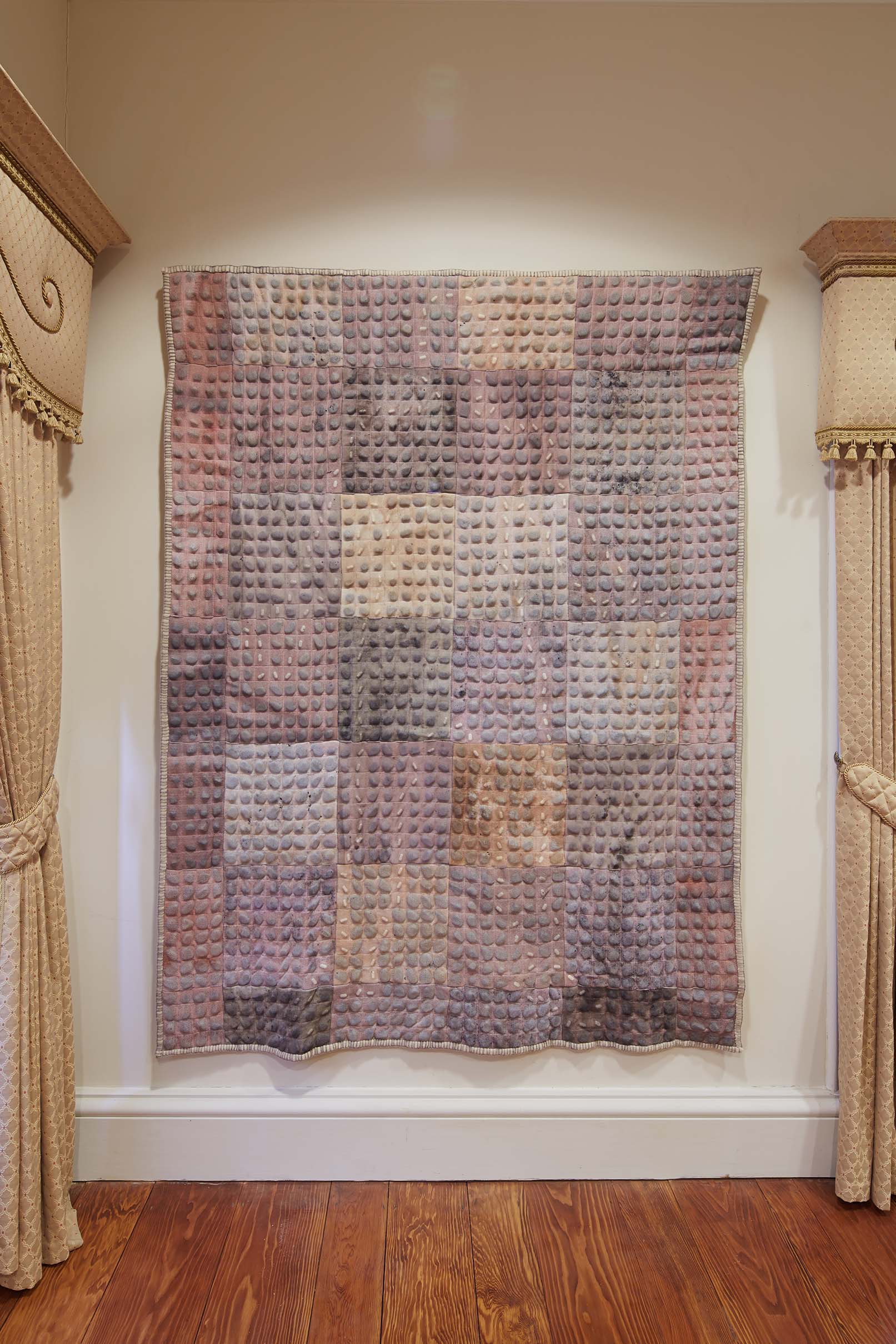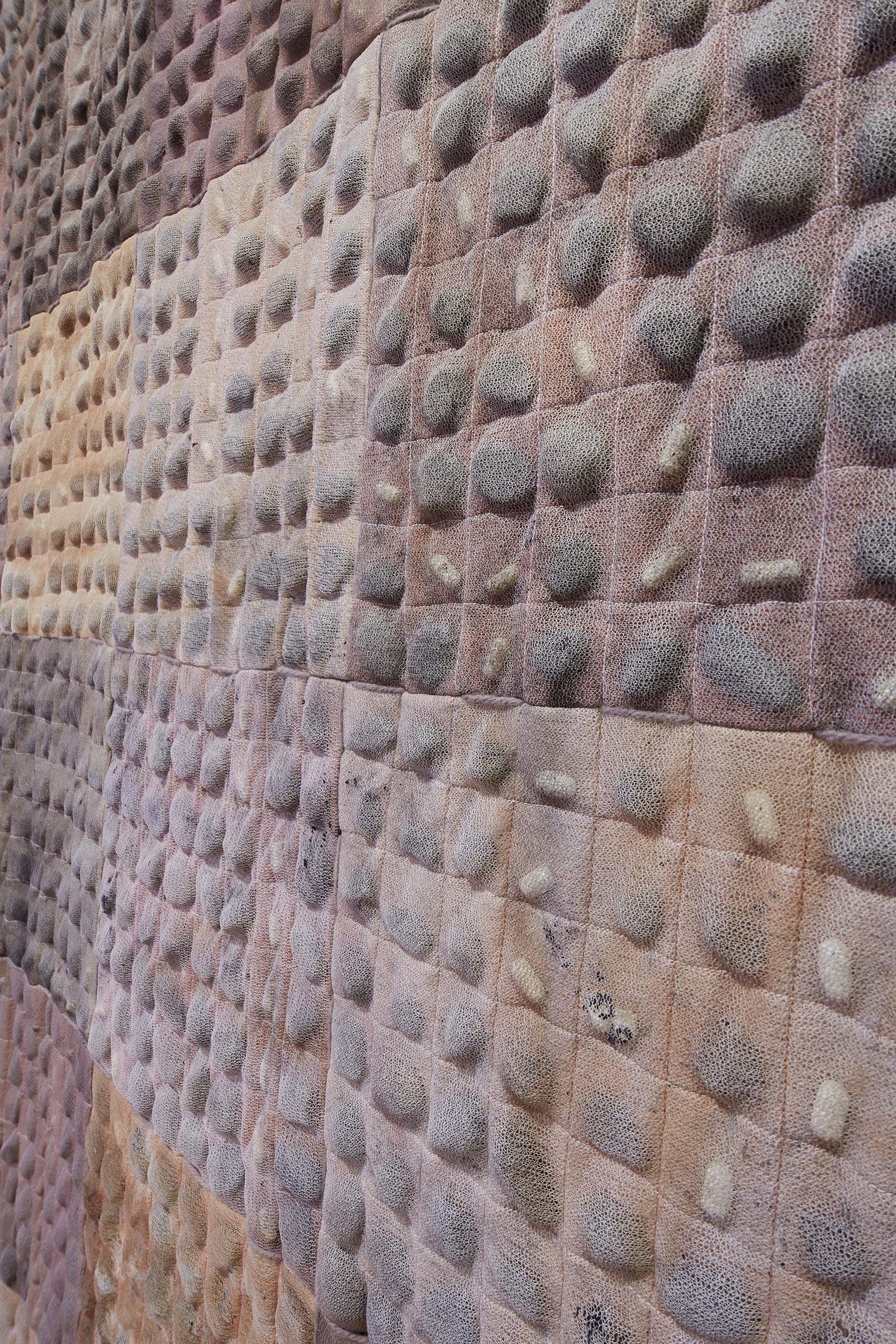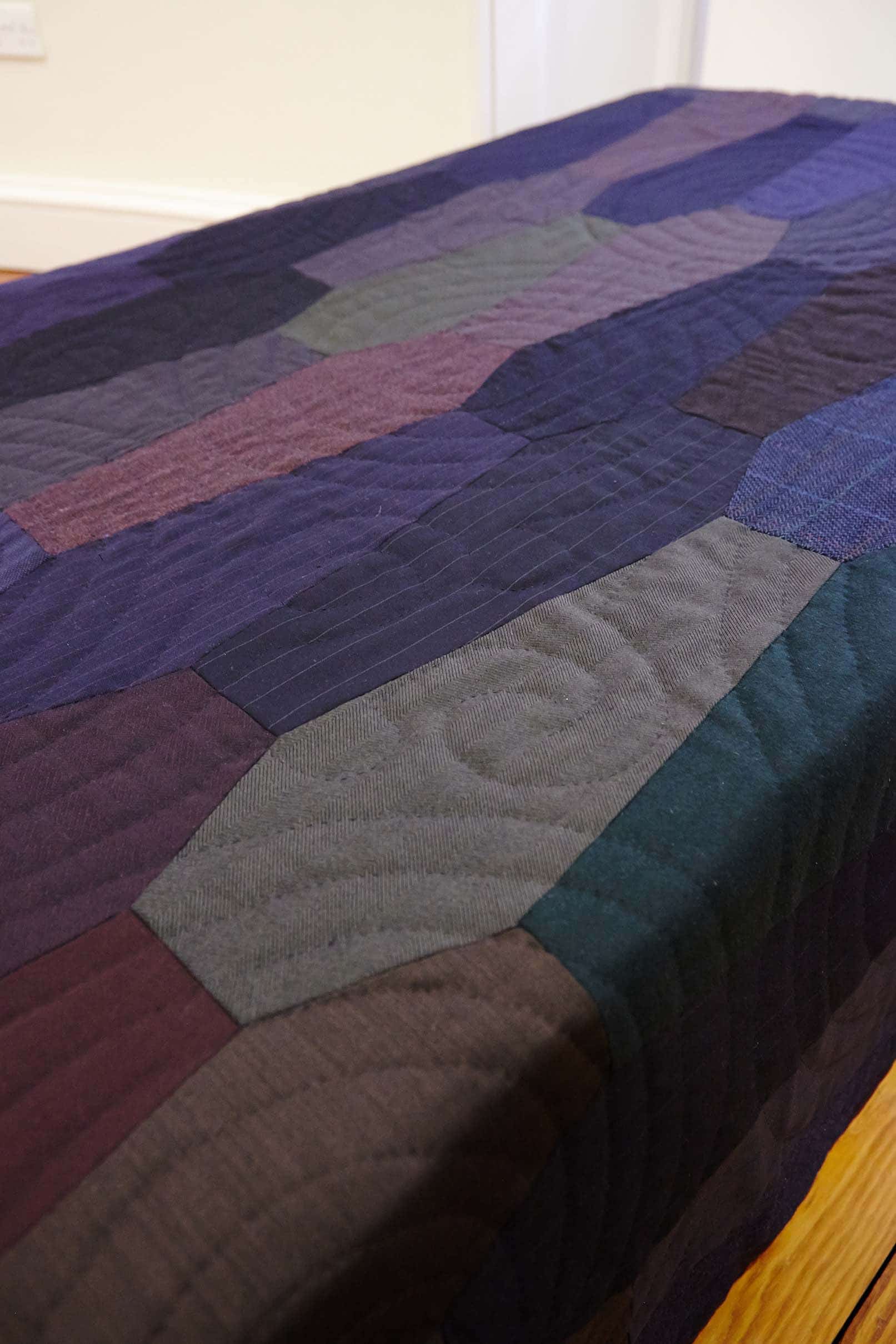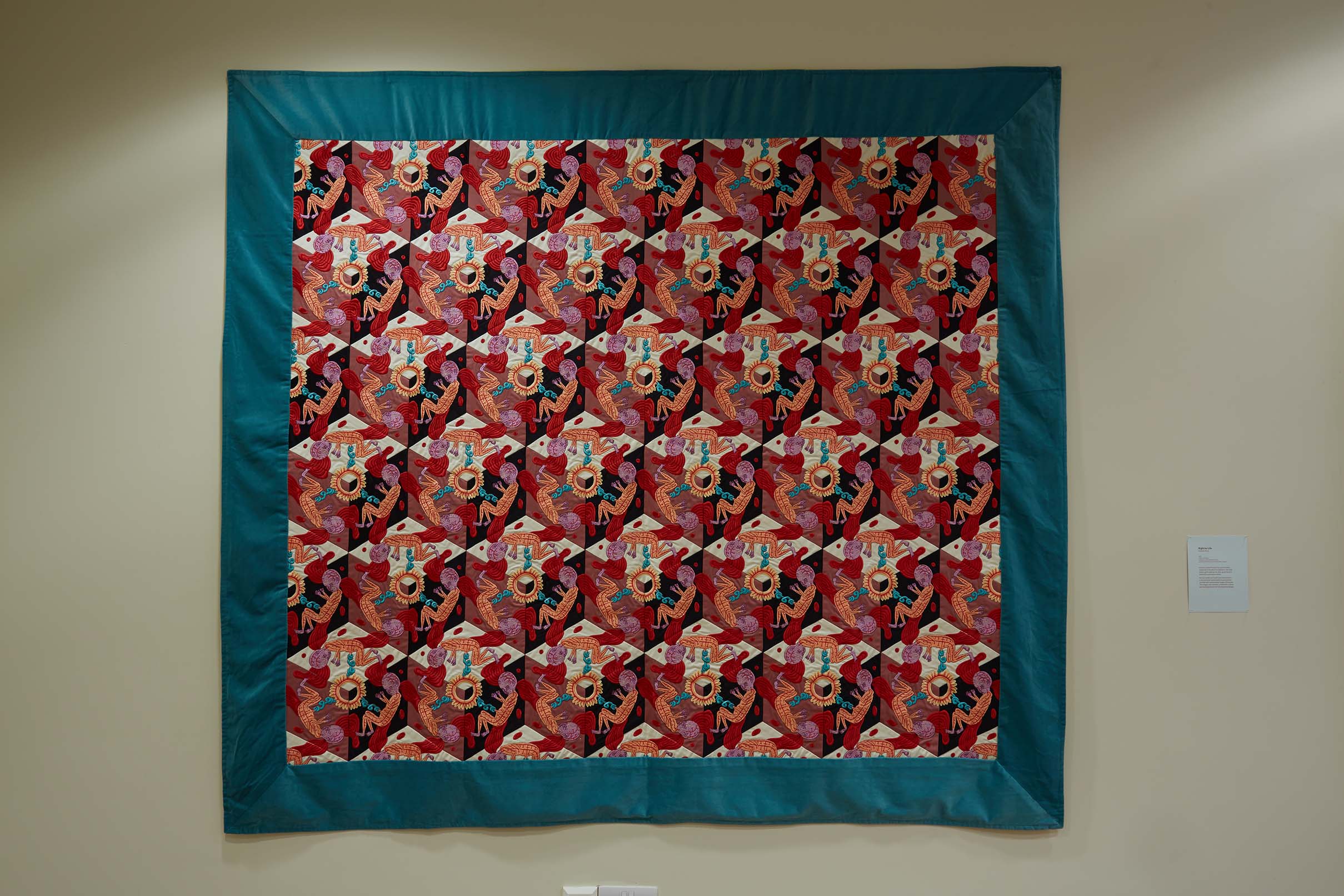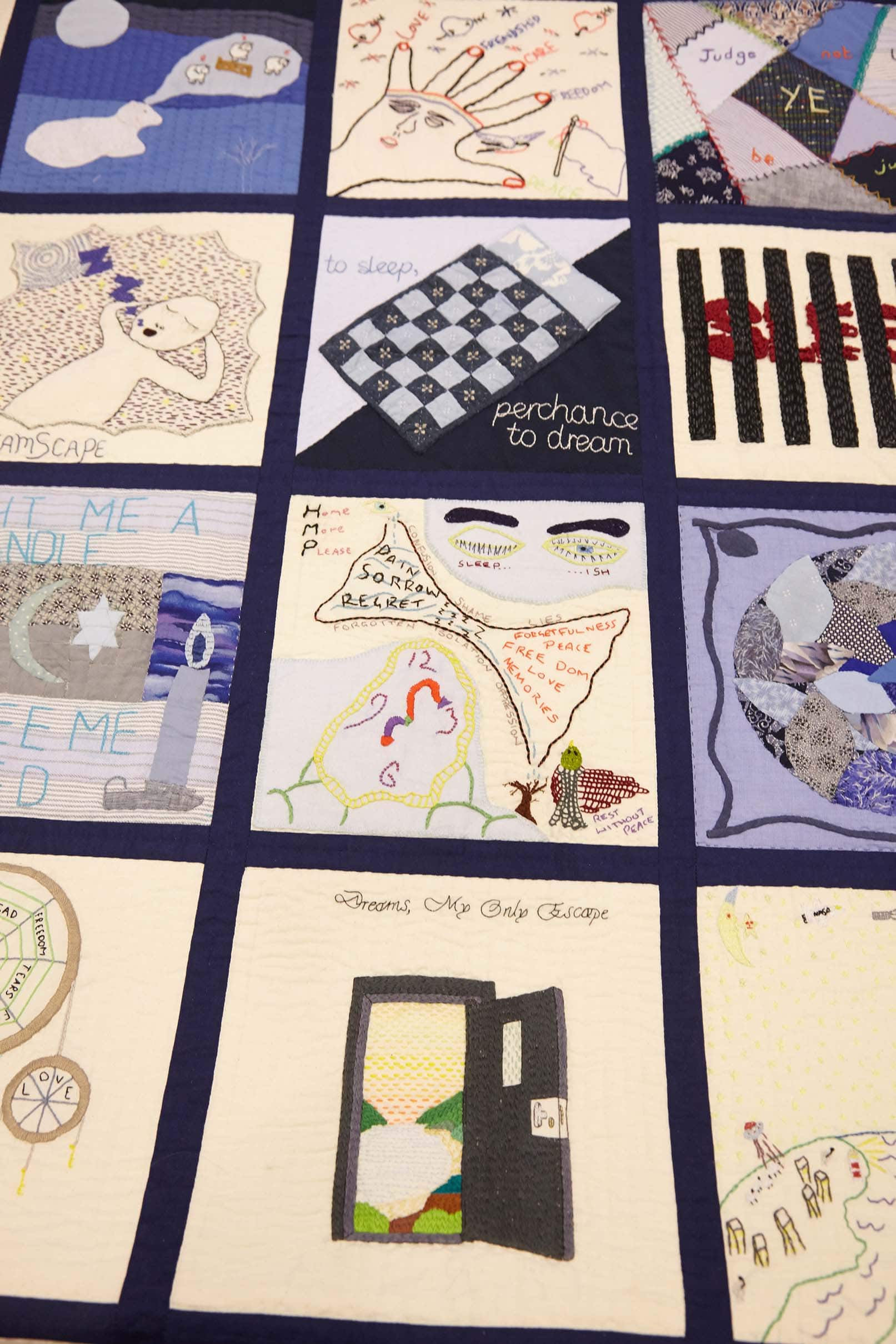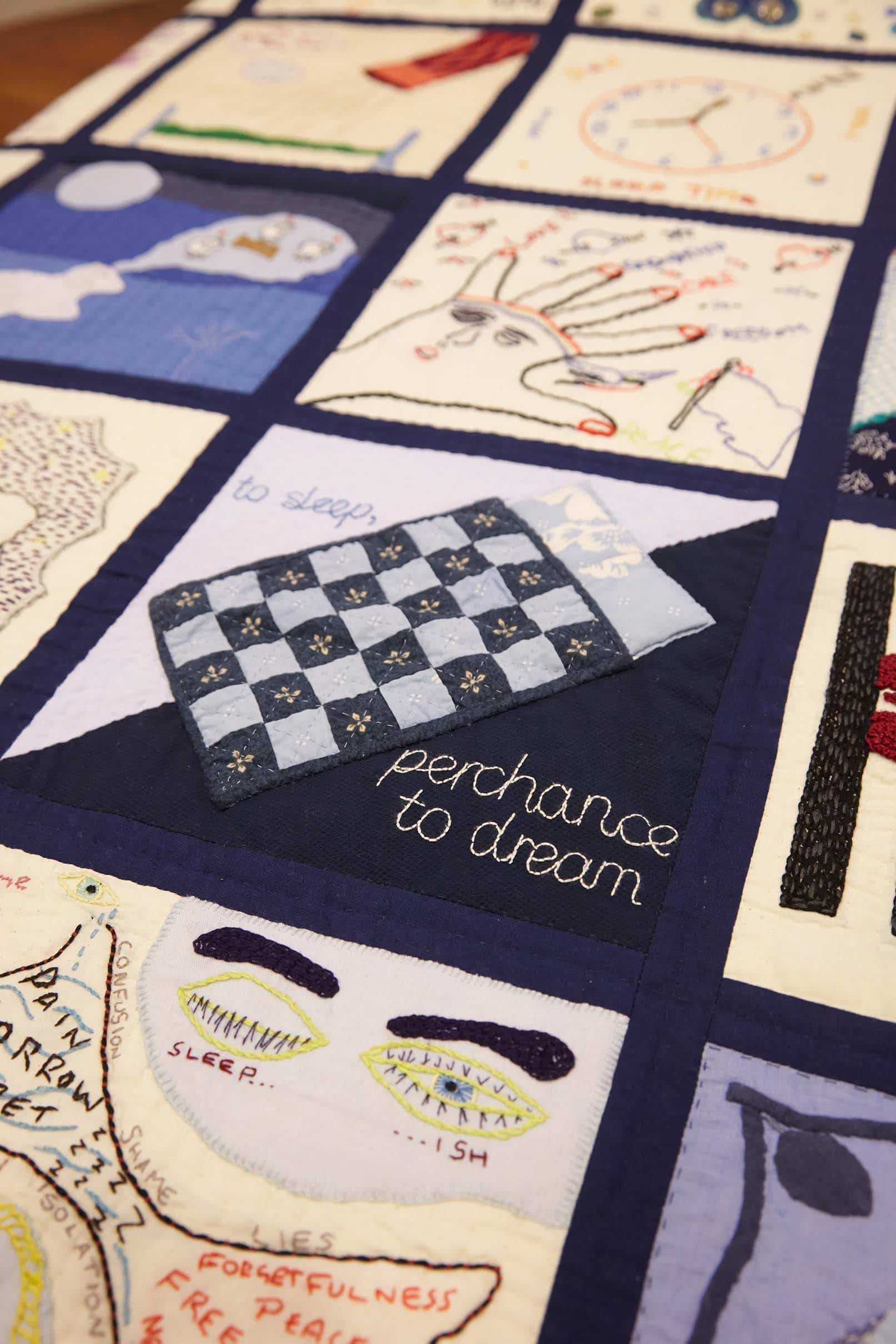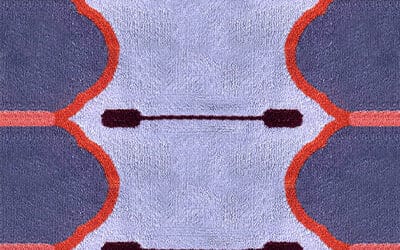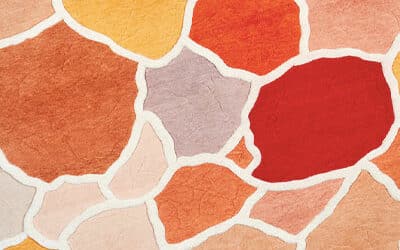Curated by bestselling novelist Tracy Chevalier, the exhibition ‘Things We Do in Bed’ at Danson House in Bexleyheath, Kent, is a display of quilts and quilt related works dating from the 18th century to contemporary pieces. Lucy Upward reports.
The quilts have been placed throughout the five bedrooms upstairs in the renovated stately home Danson House, with each room focusing on a different bed activity: Birth, Sleep, Sex, Illness, Death.
Welcoming us into the show and hanging over the stairwell is a Palampore style quilt with a Tree of Life design dated 1810, courtesy of Jen Jones of the Welsh Quilt Centre. Then into the first of the five rooms which focuses on Birth. Grayson Perry’s quilt art piece Right to Life was made as a provocative response to the abortion debate in the USA and sits sits alongside a beautiful white on white 18th century cot cover from the Victoria & Albert Museum. The two quilts have very different origins and purposes but sit happily together, almost as if one is a contrary response to the other.
Sleep is represented by a beautifully detailed quilt produced by the Fine Cell Work project, which provides prison inmates with the skills and materials to sew and embroider interior products for sale. The Sleep Quilt, as it is named, comprises small squares each made by a different individual which have been then sewn together. Prisoners from across the UK were asked to make squares exploring their feelings about sleep so each square tells its own story, the story the maker wished to tell us: some happy, some funny, some very moving.
In the Illness room, another moving and truly emotional piece is Becky Knight’s Depressions, drawn from her own experience of the illness. This quilt has different elements and qualities to the other works in the show, made with overlaid sheer materials and objects (stones and pills) sewn between the fabrics, it incorporates the idea of layers and the emotional response one has to hidden objects and their implied meaning. Knight’s piece draws you in to its melancholic mood.
Sara Impey’s intricate and sculptural piece Interconnections stood alone, draped across a chaise longue in the room representing Sex. Constructed of embroidered material loops connected together in a form of chain with messages stitched on, the piece somehow left me with a feeling of gloom, claustrophobia and the need for escape. And escape I did to Death, a room which could be full of further gloom but which contains a beautiful 19th century black and white American quilt from The American Museum in Bath and Michele Walker’s two memoriam pieces produced after the death of her mother, who had dementia.
Rather more bleak but totally compelling is Barbara Todd’s Dark Coffin Quilt constructed out of many small coffin shaped pieces of cloth in sombre colours. The quilt adorns one single bed and, as the description reads, this represents the idea that one dies alone.
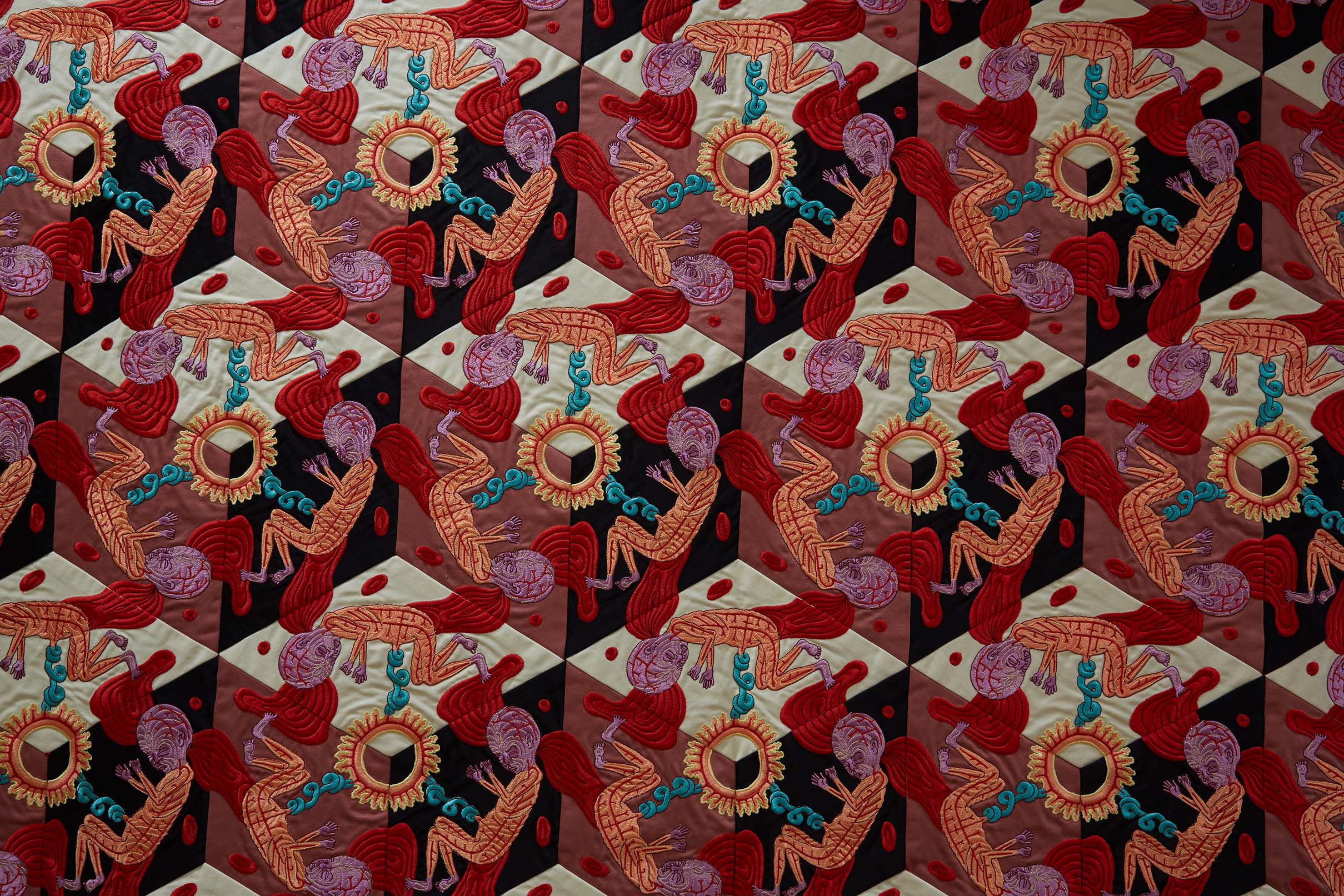
Right to Life (detail), 1998, Grayson Perry. Courtesy the Artist and Victoria Miro, London © Grayson Perry
‘Things We Do in bed’ is a small but perfectly formed show, with well-chosen pieces that really evoke some strong emotional responses. The arrangement of the pieces in quiet, sparsely decorated bedroom spaces helps as the obvious silence allows the viewer to contemplate. Some works are placed over bed further adding to the idea that these are intimate feelings on show. Questions are raised as to who or what these pieces are made for, both traditionally and now today, are they functional or purely art? And who makes quilts? Traditionally it was women but here are British artist Grayson Perry and male prisoners having a go. Does the meaning or purpose somehow change? One is left to contemplate on many things.
